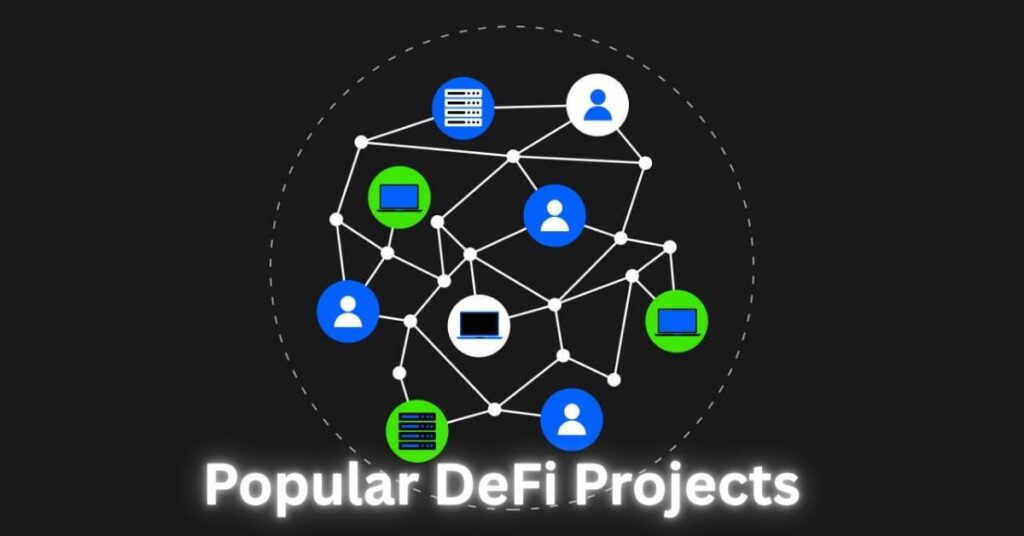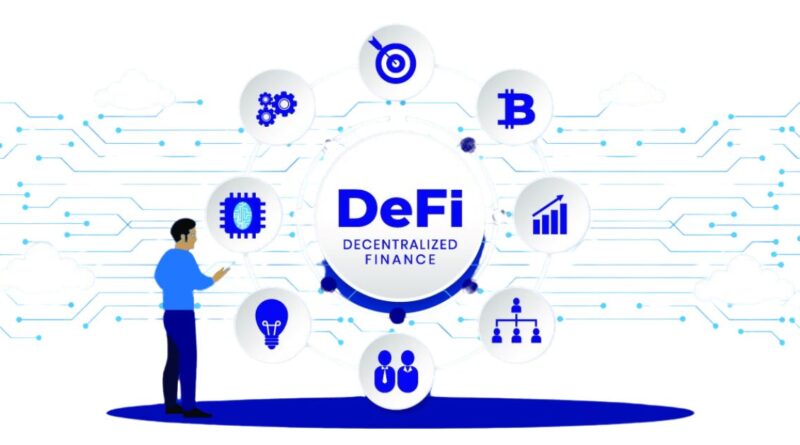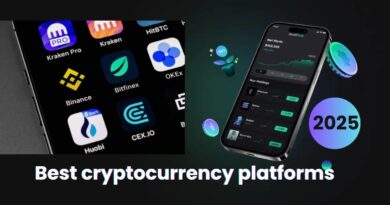What is DeFi? Understanding the Crypto Revolution in Finance
Decentralized Finance, more commonly known as DeFi, is one of the most transformative innovations to emerge from the world of cryptocurrency. It represents a financial ecosystem built on blockchain technology, where traditional financial services such as lending, borrowing, trading, insurance, and asset management are conducted without centralized institutions like banks or brokers. DeFi aims to create a more open, transparent, and permissionless financial system that is accessible to anyone with an internet connection. In this article, we’ll explore DeFi in detail: its origins, how it works, its core components, benefits, risks, and its future potential.
The Origin and Evolution of DeFi
The concept of decentralized finance began to gain traction with the launch of Ethereum in 2015. While Bitcoin introduced the idea of peer-to-peer digital money, Ethereum enabled developers to build smart contracts—self-executing code that runs on the blockchain. These contracts are the foundation of DeFi applications (often called dApps).
In 2017 and 2018, projects like MakerDAO and Compound were launched, offering decentralized lending and stablecoins. By 2020, DeFi experienced exponential growth, with the “DeFi Summer” leading to billions of dollars being locked in various DeFi protocols. This movement continues to grow, reshaping how people interact with money.
How DeFi Works
DeFi uses blockchain networks—primarily Ethereum—to offer financial services. Here’s how the system works:
-
Smart Contracts: These are code-based agreements that automatically execute actions like lending, borrowing, or exchanging assets when certain conditions are met.
-
Tokens: DeFi platforms use crypto tokens, especially ERC-20 tokens on Ethereum, to represent value. These tokens can represent anything from currency to synthetic assets.
-
Decentralized Applications (dApps): These are the user interfaces built on smart contracts that allow users to interact with DeFi services.
-
Wallets: Users need crypto wallets (like MetaMask or Trust Wallet) to access DeFi services without intermediaries.
Everything is transparent and recorded on the blockchain, allowing anyone to audit the code and transaction history.
Core Components of DeFi
Several key components make up the DeFi ecosystem:
1. Decentralized Exchanges (DEXs)
DEXs like Uniswap, SushiSwap, and PancakeSwap allow users to trade cryptocurrencies directly from their wallets. They use automated market makers (AMMs) instead of traditional order books, making trading efficient and decentralized.
2. Lending and Borrowing Platforms
Platforms like Aave, Compound, and MakerDAO let users lend their crypto assets and earn interest, or borrow assets by providing collateral. These services are completely automated through smart contracts.
3. Stablecoins
Stablecoins are cryptocurrencies pegged to a stable asset like the US dollar. Examples include DAI, USDC, and USDT. They are essential for reducing volatility in DeFi transactions.
4. Yield Farming and Liquidity Mining
Yield farming involves providing liquidity to DeFi protocols in return for rewards, often in the form of new tokens. Liquidity mining is a subset where users earn protocol-native tokens as incentives.
5. Derivatives and Synthetic Assets
Platforms like Synthetix offer synthetic versions of real-world assets such as gold, stocks, or fiat currencies. This enables exposure to traditional assets without owning them directly.
6. Insurance Protocols
DeFi is risky, so protocols like Nexus Mutual and Cover Protocol provide decentralized insurance against smart contract failures and hacks.
7. Asset Management Tools
Platforms like Yearn Finance help users optimize their yield farming strategies by automating asset allocation to the highest-yielding pools.
Benefits of DeFi
DeFi offers several advantages over traditional financial systems:
1. Accessibility
Anyone with an internet connection and a crypto wallet can use DeFi, regardless of location or background.
2. Transparency
All transactions are recorded on a public blockchain, and smart contract code is open-source, allowing for complete transparency.
3. Control and Ownership
Users retain full control of their assets. There is no need to trust a third party or hand over custody.
4. Programmability
Smart contracts enable complex financial transactions and services to be automated and customizable.
5. Cost Efficiency
By removing intermediaries, DeFi can significantly reduce fees and transaction costs.
6. Innovation and Interoperability
DeFi is composable, meaning different applications can be integrated like building blocks. This opens the door to rapid innovation.
Risks and Challenges in DeFi
Despite its benefits, DeFi is not without risks. Users must be aware of the following challenges:
1. Smart Contract Vulnerabilities
Smart contracts are only as secure as the code they are written with. Bugs or exploits can lead to massive losses.
2. Impermanent Loss
When providing liquidity, users can suffer impermanent loss if token prices diverge significantly, potentially offsetting gains.
3. High Volatility
Crypto markets are volatile, and the value of tokens can change rapidly, affecting lending collateral and investment returns.
4. Regulatory Uncertainty
Governments and regulators are still grappling with how to regulate DeFi, which could lead to sudden changes in legality or compliance requirements.
5. Scams and Rug Pulls
Since DeFi is open to everyone, bad actors can launch malicious projects, luring users with high returns only to steal funds.
6. User Error
Unlike traditional banking, there’s no customer support in DeFi. A lost private key or incorrect transaction cannot be reversed.
Popular DeFi Projects
Here are some of the most influential and trusted DeFi protocols:
-
Uniswap – A leading decentralized exchange with billions in daily trading volume.
-
Aave – A protocol for lending and borrowing assets with innovative features like flash loans.
-
MakerDAO – Creator of DAI, a decentralized stablecoin backed by crypto collateral.
-
Compound – Allows users to earn interest or borrow against crypto assets.

-
Curve Finance – A DEX optimized for stablecoin trading.
-
Yearn Finance – A yield aggregator helping users maximize DeFi returns.
-
Synthetix – Enables trading of synthetic assets that track real-world prices.
How to Get Started with DeFi
If you’re interested in exploring DeFi, here’s a step-by-step guide:
1. Set Up a Crypto Wallet
Install a DeFi-compatible wallet like MetaMask or Trust Wallet. Ensure you securely store your seed phrase.
2. Buy Cryptocurrency
Use a centralized exchange like Coinbase or Binance to buy Ethereum or another supported token. Transfer it to your wallet.
3. Choose a DeFi Platform
Pick a reputable dApp such as Uniswap or Aave based on your goals—trading, lending, or yield farming.
4. Connect Your Wallet
Visit the DeFi website and connect your wallet to begin interacting with the protocol.
5. Start Small and Learn
Begin with small amounts to understand how everything works. Research terms like gas fees, slippage, liquidity, and collateral ratios.
The Future of DeFi
The future of DeFi looks promising, with continuous innovation and mainstream adoption on the horizon. Here are some key trends shaping its future:
1. Layer 2 Solutions
To combat high Ethereum gas fees, Layer 2 solutions like Arbitrum, Optimism, and zk-Rollups are enabling faster and cheaper transactions.
2. Cross-Chain Compatibility
Projects are working to enable DeFi protocols to interact across different blockchains (e.g., Ethereum, Solana, Avalanche, BNB Chain), improving scalability and user choice.
3. Institutional Adoption
Major financial institutions are beginning to explore DeFi, investing in projects and creating their own DeFi-based platforms.
4. Regulatory Clarity
Governments are actively discussing how to regulate DeFi. Clear rules could encourage responsible innovation and increase investor confidence.
5. Real-World Asset Integration
DeFi is beginning to incorporate real-world assets like real estate, bonds, and commodities, offering more practical use cases.
6. Improved User Experience
New platforms aim to make DeFi more user-friendly, reducing the technical barrier and enhancing security.
Is DeFi the Future of Finance?
DeFi is not just a trend—it is a reimagining of the global financial system. By leveraging blockchain technology and eliminating the need for intermediaries, DeFi empowers individuals with unprecedented financial autonomy and access. While it’s still in its early stages and comes with considerable risks, its potential is vast.
For those who understand the technology and risks involved, DeFi offers opportunities not available in traditional finance. However, it is essential to stay informed, conduct due diligence, and only invest what you can afford to lose.
Conclusion
DeFi in crypto represents a paradigm shift in how we think about money, finance, and control. With its permissionless nature, transparency, and constant innovation, DeFi has the power to make financial services more inclusive and efficient. As it continues to evolve, it is reshaping the landscape of global finance. Whether you’re a casual investor or a financial innovator, understanding DeFi is essential in the new world of crypto-driven finance.
FAQ
What does DeFi stand for in crypto?
DeFi stands for Decentralized Finance, a blockchain-based form of finance that does not rely on central financial intermediaries.
Is DeFi safe to use?
While DeFi offers high returns, it also carries risks such as smart contract bugs, market volatility, and potential scams.
How do you make money with DeFi?
Users can earn through lending, staking, providing liquidity, or participating in yield farming on various DeFi platforms.
Which blockchain is most used for DeFi?
Ethereum is the most widely used blockchain for DeFi due to its early adoption and vast ecosystem of dApps and tokens.
Can you use DeFi without KYC?
Most DeFi platforms do not require KYC, allowing users to access services anonymously, although this may change with regulations.
What is a DEX in DeFi?
A DEX, or decentralized exchange, allows users to trade cryptocurrencies directly without a centralized intermediary.
What is the difference between DeFi and traditional finance?
DeFi is decentralized, open-source, and permissionless, whereas traditional finance relies on banks and regulated institutions.




